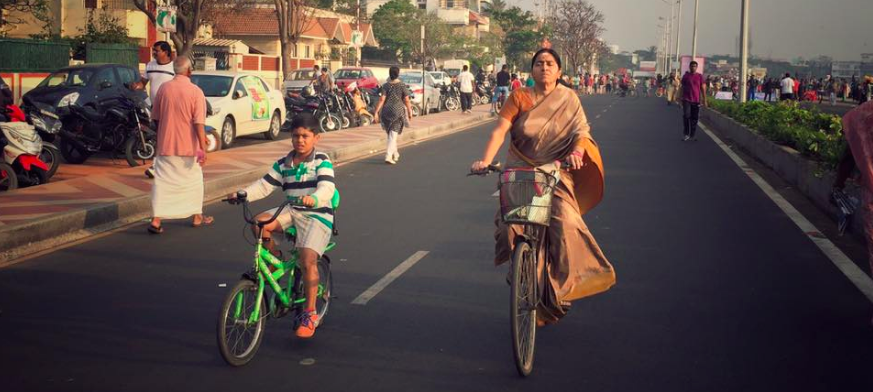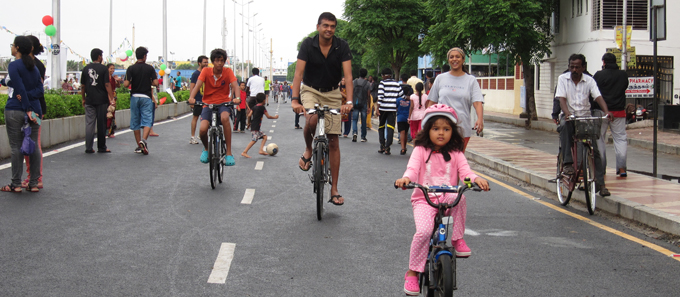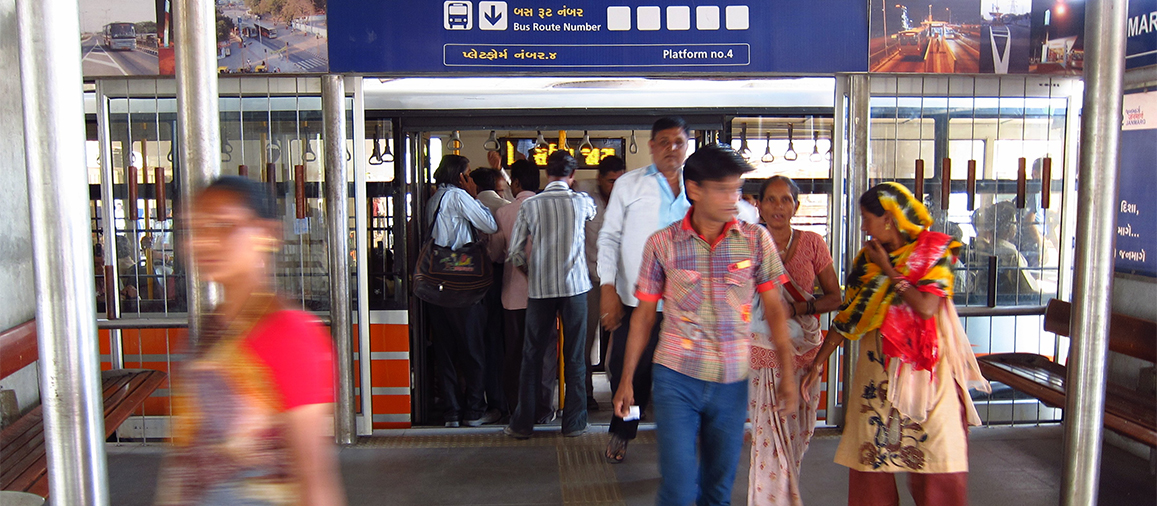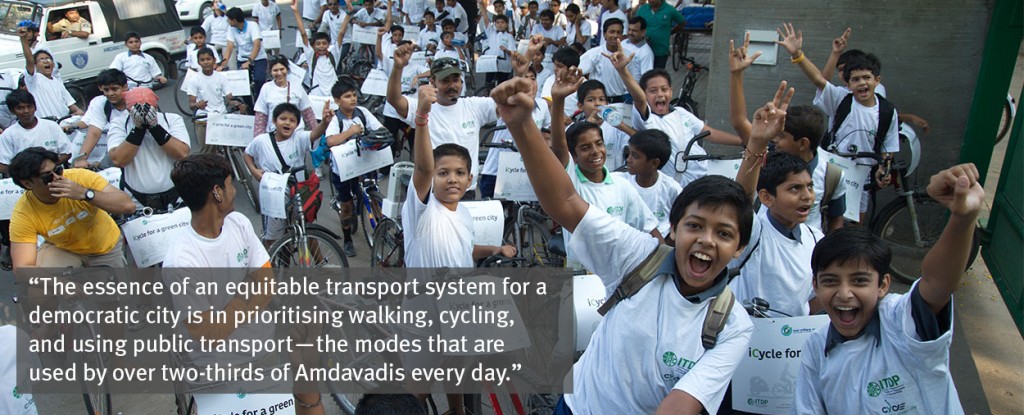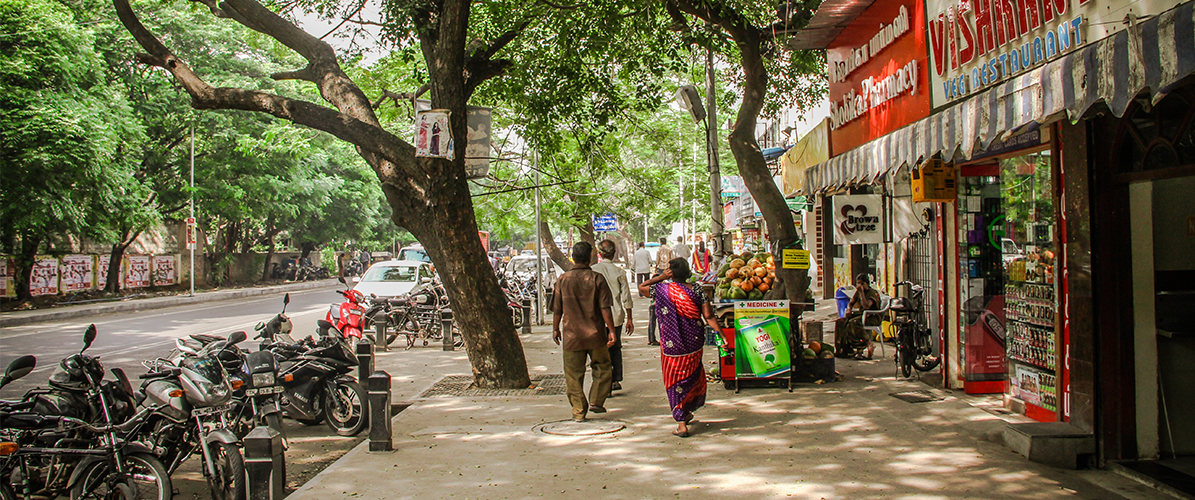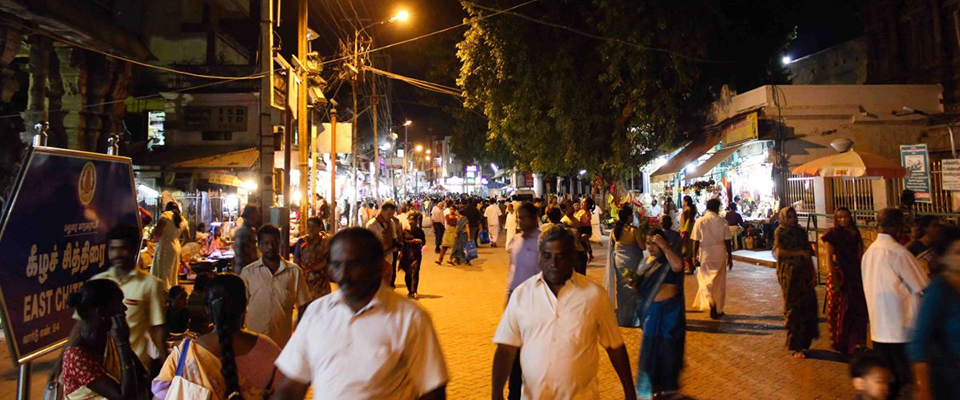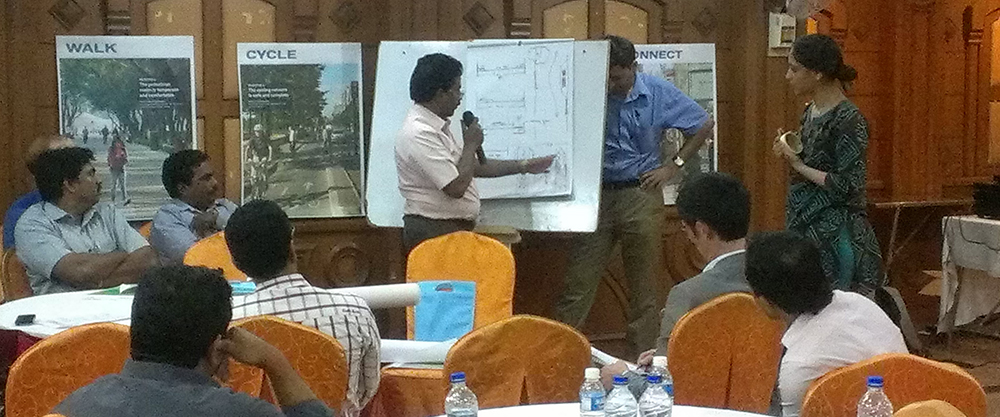ITDP brings you news from around the world about sustainable transport and urban development. The past year was interesting, specially in India. Chennai’s NMT transformation, to Delhi’s odd-even car-restriction scheme, to Burdwan’s car-free days, change was in the air!
The Conference of Parties summit – popularly called COP21- held in Paris last December, saw the nations committing to maintain an increase in the world’s temperature at less than 1.5 degrees Celsius. To paraphrase Benjamin Franklin, ‘If we don’t hang together, assuredly, we shall hang separately”.
Transport accounts for a staggering 23 percent of energy-related CO2 emissions. There is NO WAY we can redress the situation without changing the way we travel. A large-scale, planned movement towards non-motorised, and public, transportation seems the only practicable way out. Let us see what Indian cities have been trying out, lately :




